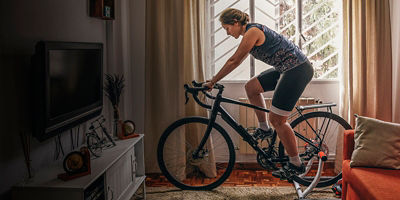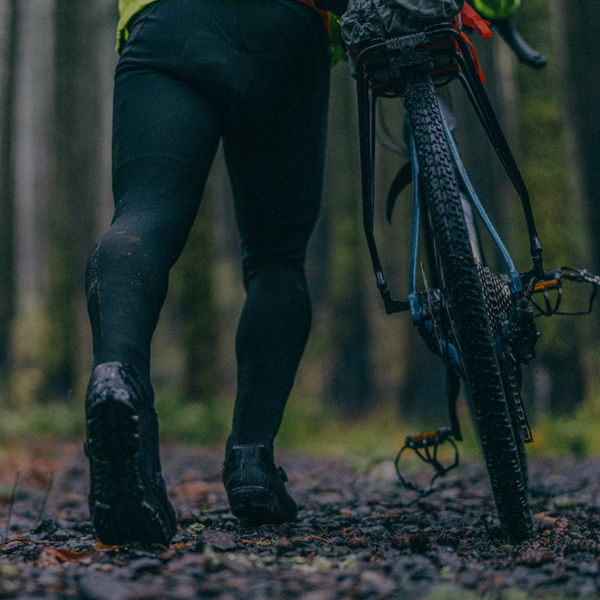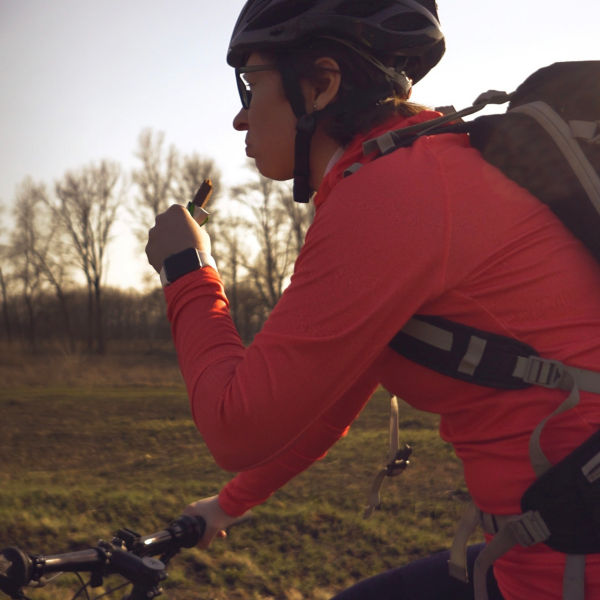Types of Locks
Pick the one with the security, size, and flexibility that you need.
U-Locks
U-locks, also sometimes called D-Locks, connect a metal crossbar with a U-shaped metal shackle. Depending on the size, many cyclists are able to lock both their frame and a wheel with one lock. These secure locks resist prying and cutting well, but some riders don’t like their bulk and weight.
They are available in many sizes, just be sure that the shackle is big enough to go around your bike and whatever you lock it to. These can be hard to carry, so many manufacturers include a frame mount so you can attach it to your bike.
These are great for urban riders and commuters, and those who lock their bike up for long stretches of time, though they are not a great option for longer rides because of their weight and difficulties with carrying them comfortably.
Chain
These locks are a classic option because of their versatility. Chains make it easy to lock your bike to a variety of anchor points, and even lock multiple bikes up with the same lock. A strong lock, though, is often heavy, and if the links are unprotected, it can scratch your bike.
If the chain is large enough, you can carry it around your waist or over a shoulder, but this can weigh you down on the bike. Otherwise, you’ll have to wrap it to your frame, or stow it in a bike bag or bin while riding.
These are great for shorter rides around town, for running errands, and for those riding to unknown destinations: forcing a search for a railing, light post, or rack upon arrival.
Folding Lock
These bike locks use steel plates connected by a hinge on the end, kind of like an old foldable tape measurer. They pack down for easy transport or mounting on the bike, but then expand to wrap around your frame and anchor point. Though they don’t have the flexibility of a chain, they are far more flexible than a U-lock. The multiple hinges also mean more potential weak points than a U-lock. Portability and strength, however, make them a great option for commuters and for recreational riders going for extended miles, making stops without knowing the locking options ahead.
Cable
Cable locks are an extremely portable option. They use a braided metal cable that is flexible to wrap around your bike and anchor. Plus, they’re often incredibly light. They do not, however, offer great security as they can be clipped off your bike. These are a great option for areas where you just need a touch more initial theft deterrence, like on a secluded college campus, an apartment bike room, or a bike rack as you pop into a coffee shop in the afternoon.
How To Secure
Many lock companies will offer locks with either a keyed or combination mechanism. While combo locks require you to remember a code, keyed locks often allow you to get multiple locks that use the same key—you’ll just need to remember, carry, and not lose the key(s). The best choice is whatever you prefer to keep track of: code or key.
Lock Ratings
Locks of all varieties will be sold at different security ratings. While it’s fair to say that most U-locks will be more secure than cable locks, not all are created equal. Look for official third-party lock ratings, like Sold Secure, to check lock strength. Keep in mind where you intend to leave your bike and for how long, then buy the appropriate security to match: Are you preventing the neighbor who wants to just “borrow” your bike from the bike room for a quick trip, or stopping a seasoned thief with bolt cutters?
Extreme Cases
Out on a Tour
Bike tourers often try to find the combination of lightest and most theft-resistant locks. This way they don’t weigh themselves down, and they don’t lose their ride. Many even use multiple locks that would require two different sets of tools to break, like a U-lock and a cable or chain. A primary lock might lock the frame and back wheel to an anchor, while a chain or cable secures the front wheel and frame to the same anchor. A thief would need to pry their U-lock and cut their cable or chain.
Out on a Road Ride
Many road riders want to be as light as possible, so they avoid carrying a lock. But this can make going to the bathroom, getting coffee, or refilling your water bottle extremely stressful, as your bike sits unattended and unlocked. To relieve that stress, many companies make super compact locks that look almost like metal zip-ties that fit in a bib pocket or seat bag. These locks are small enough to still go light, and provide just enough protection to deter a theft of opportunity.















